Buzzwords like “sustainability”, “becoming green” or “reducing our footprint” have become an inherent part of any company´s communication efforts. You cannot sell your product or service if you don´t present any efforts in this direction. Which is indeed a good thing, when done in an honest and straightforward way. PR-stunts and greenwashing, though still a thing, are fortunately more and more identified as those by an increasingly mature public. With NO FRILLS SAILING.com I am regularly writing about projects and initiatives which are truly and honestly aimed at making a real change and starting something new. Innovative, interesting and possibly disruptive ideas which could lead to something better and something new.
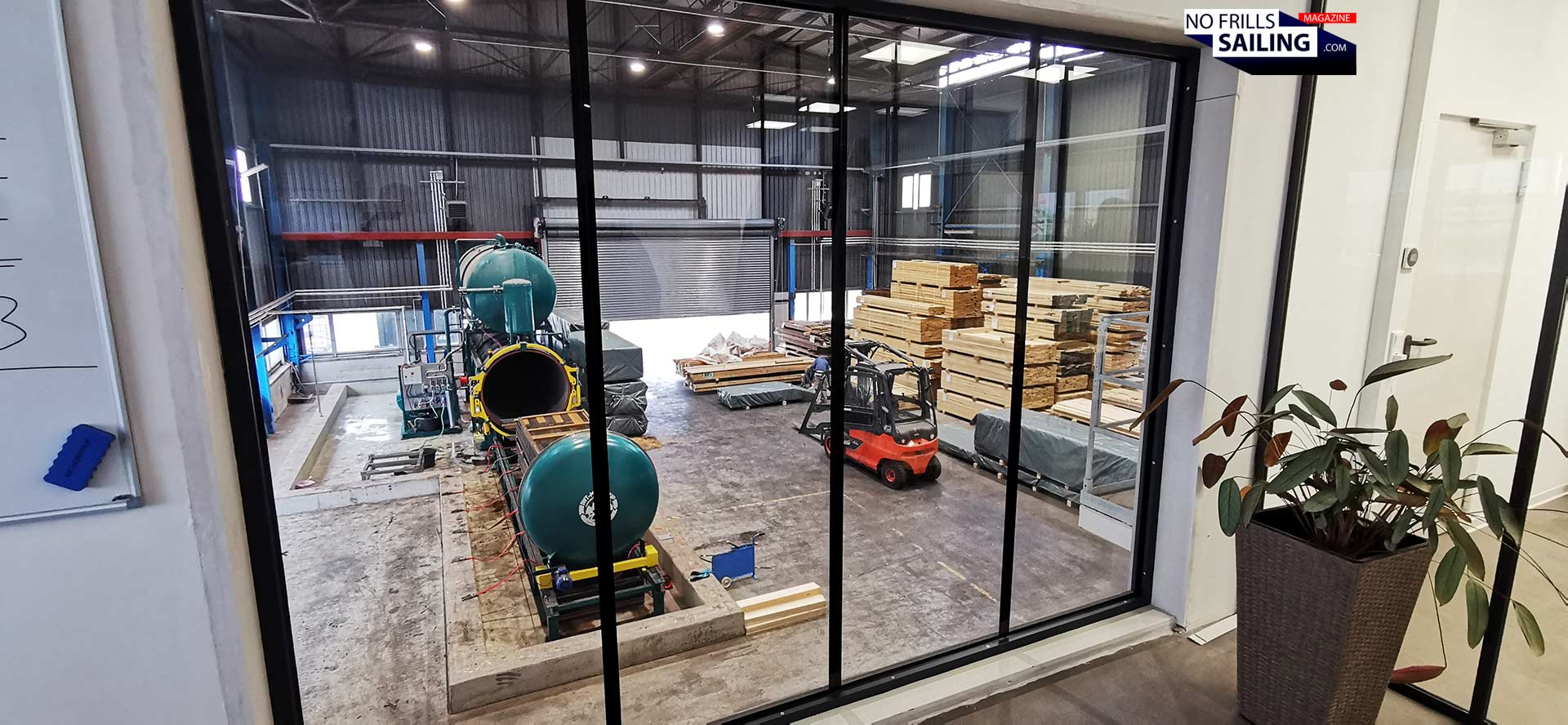
In this, you may check my articles on #woodenfuture as I am considering wooden yachts and boats made out of wood a possible game changer. But I´ve also documented smaller and bigger projects by smaller and bigger companies already. Last week I happened to be in Bremen at the River Weser again, where Arne Petersen, CEO of Tesumo, had invited me to meet the “fathers” of this interesting new material. I was not only about to meet those very guys who had the brilliant idea for this Teak-substitute but also fought to bring it to live and to market.
The story of Tesumo: Meeting at Lürssen shipyard
To my surprise Arne asked me for my ID and asked to bring protective footwear with steel caps. For this interview I would be granted access to the world´s biggest mega yacht shipyard. Adhering to their security measures (Lürssen not only manufactures super-yachts for the mega-rich but NVL, like Lürssen, is part of the Lürssen Group, as a defense contractor for various countries and governments also navy ships) is a matter of course. Why Lürssen, you ask? Well, the story of Tesumo starts exactly here. Taking pictures is strictly forbidden on the premises, so that I cannot show the absolutely insane dimensions and jaw-dropping insights I was able to collect. On the other hand I am thankful that I was allowed to shoot at least some details of the Tesumo decking of one of their newbuilds. But believe me, the walk from the parking lot to the meeting room alone would fill a handful of exciting articles.
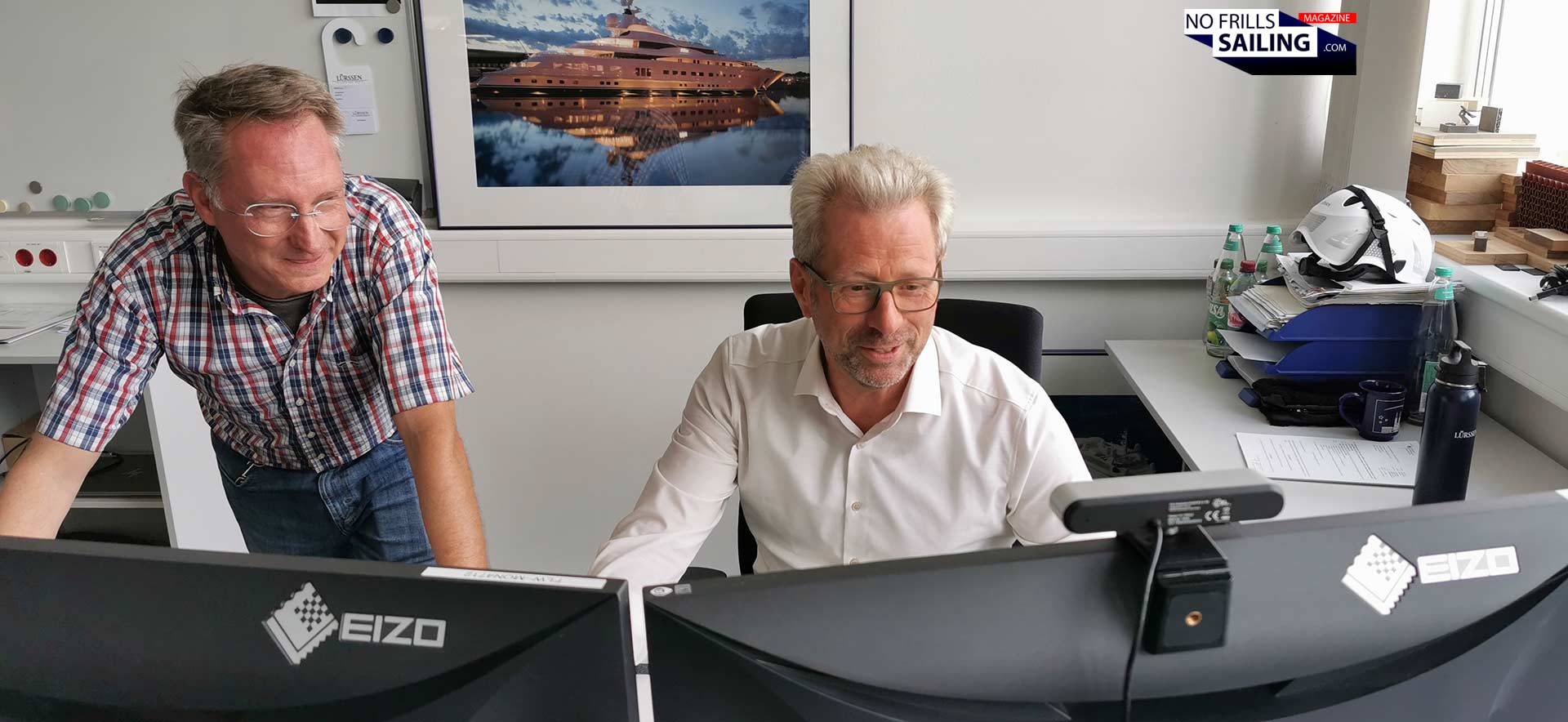
Arne leads me to the where Lürssen´s R&D department is located. An office with highly motivated engineers and designers. Large prints of proud Lürssen-ships and impressive models flank my way. You can imagine, as a ship enthusiast, my heart rate did not drop below 180 bpm. Two men approached us and introduced themselves: Frank Lüssen (without “r”, but what a funny co-incidence) and Dr. Bernhard Urban. As we are about to find out, these are the guys who not only invented Tesumo, the real wood Teak-substitute, but made it happen in a large scale. Frank Lüssen leads a team in the department for yacht outfitting and equipment. He says, that “everthing that sets apart a superyacht from a normal ship, from the pool to the helicopter deck, will be managed by our department.” This incorporates Tesumo of course.
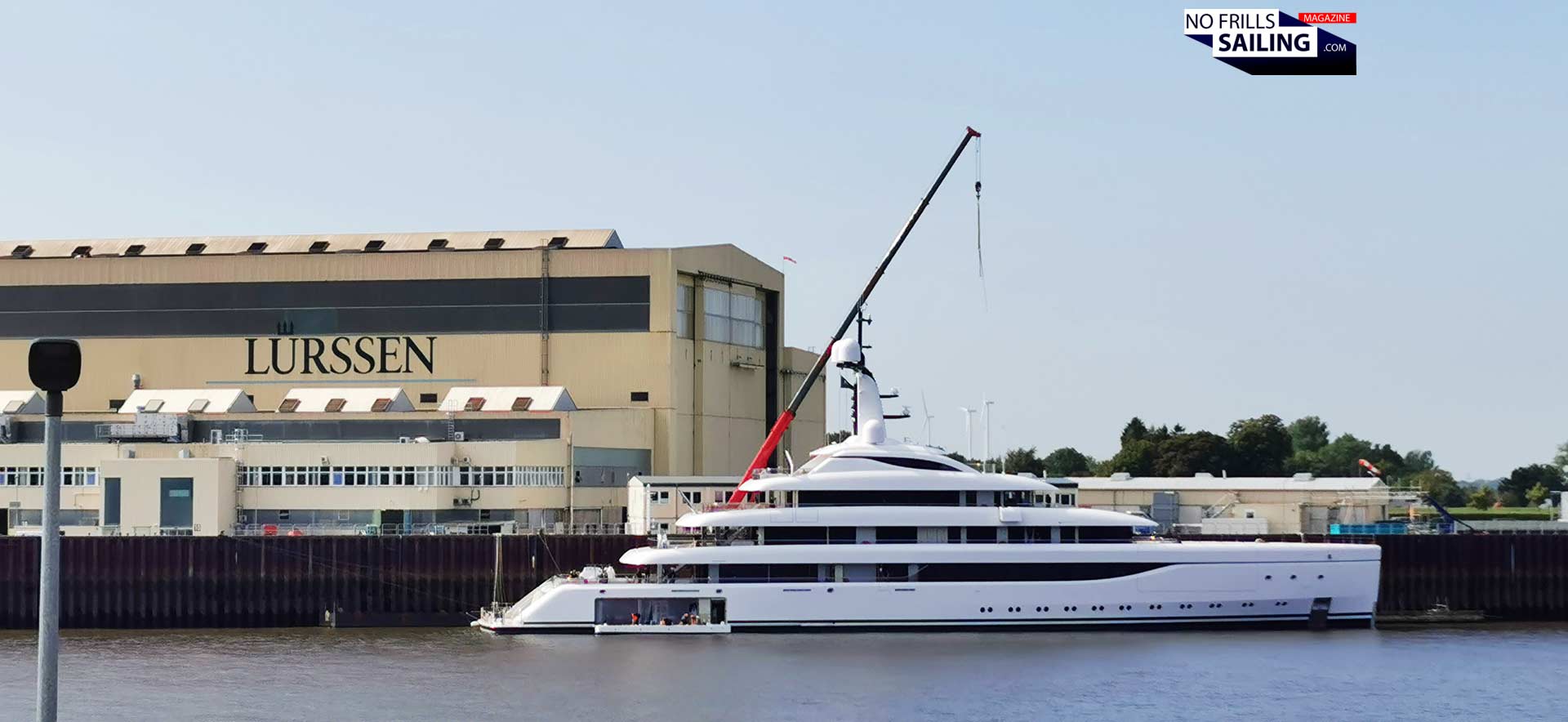
Frank has been working for Lürssen for 17 years now after having learnt the wonderful profession of boatbuilding and studying naval architecture in Germany and Southampton. Bernhard Urban has been working at Lürssen for 20 years now – coordinating all projects for the shipyard in regards to future trends and forward-looking technologies. The launch of 114 meters long COSMOS, a 1D ice-rated explorer superyacht fitted with innovative fuel cell technology – named PaXell – is the result of intensive research starting back in 2005 . Bernhard is a studied mechanical engineer and maritime enthusiast: “Having the chance to work here on such deciding projects, from fuel cells to alternative fuels and also new materials, like Tesumo, is a child´s dream come true!”, he confirms enthusiastically.
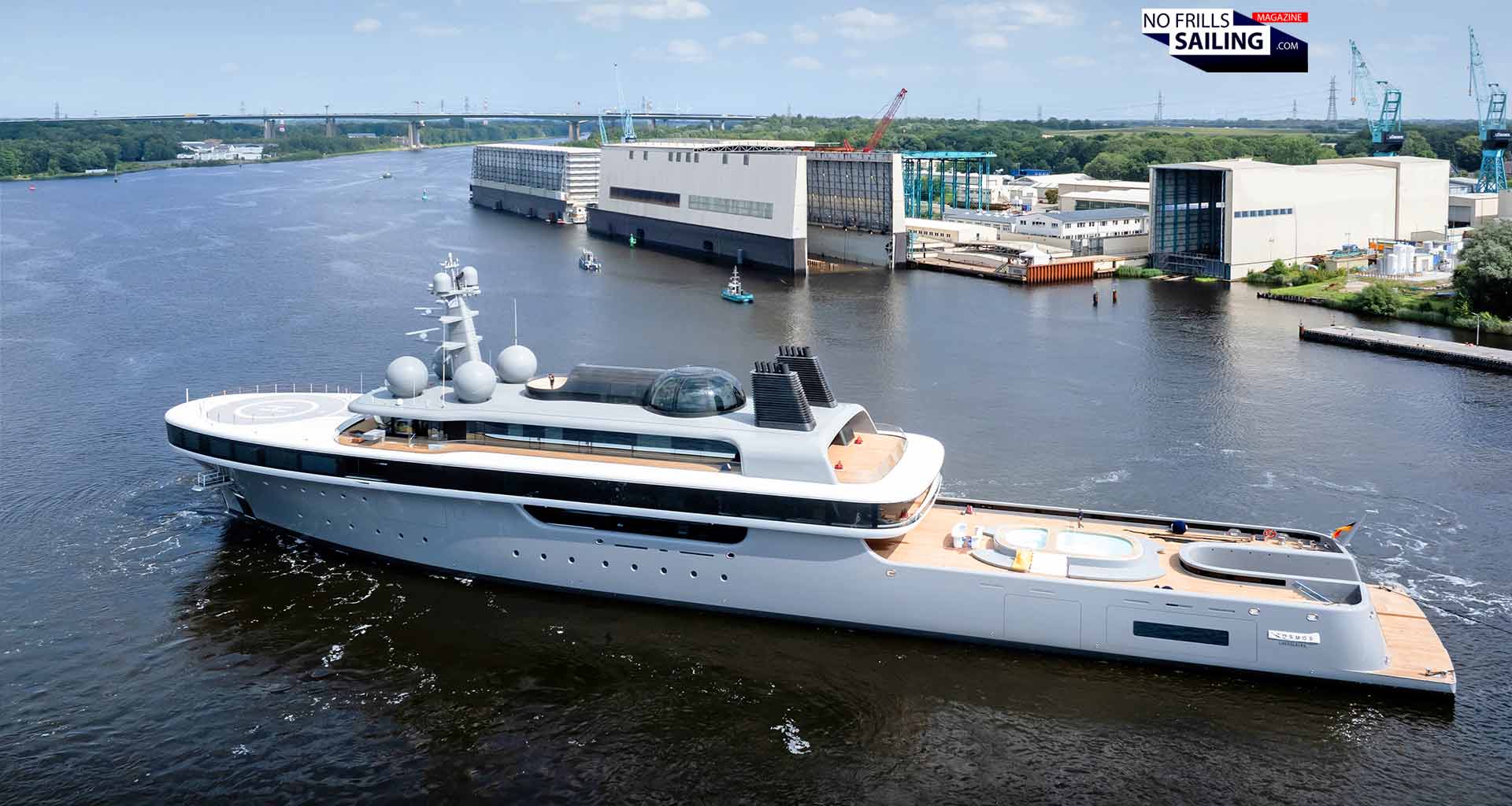
What a nice co-incidence, I think to myself and take a side note: For my own new yacht I have decided to skip entirely PV-technology as I found it too unreliable and fault-prone in my last boat. I am thinking of integrating an Efoy fuel cell system to ALPHA, so that might be interesting to talk about with Bernhard. Later. Now we are here for Tesumo. You´ve already read my first article about this fascinating material that is a true natural substitute for Teak already? If not, you should. We sit down in Lürssen´s meeting room – and start at the beginning:
Why substitute Teak for yacht decks anyway? Isn´t it the best material?
Both nod. It´s true that Teak timber has unique material properties which make it perfect for being used as decking for ships. That is the reason why for centuries Teak has been sourced in the first place. It´s easy to process, kind of elastic, won´t rot away in the aggressive marine environment and had been cultivated for shipbuilding utilizations in the main producing regions for many centuries as well. “Best marine Teak is found in Myanmar, formally known as Burma.”, says Frank. “After the good resources of India had been over-used, this country remained the sole supplier of Teak that had excellent marine qualities.” But isn´t Myanmar-Teak “bad” because they take down the rainforest? Well, that´s a myth, or misconception, Frank says: “There are only very few real primeval forests left in the world. A primeval forest is a natural forest without any human interference. But that was never the case with Teak in Myanmar, becauese these trees grow in a managed rainforest. People often confuse these two.”
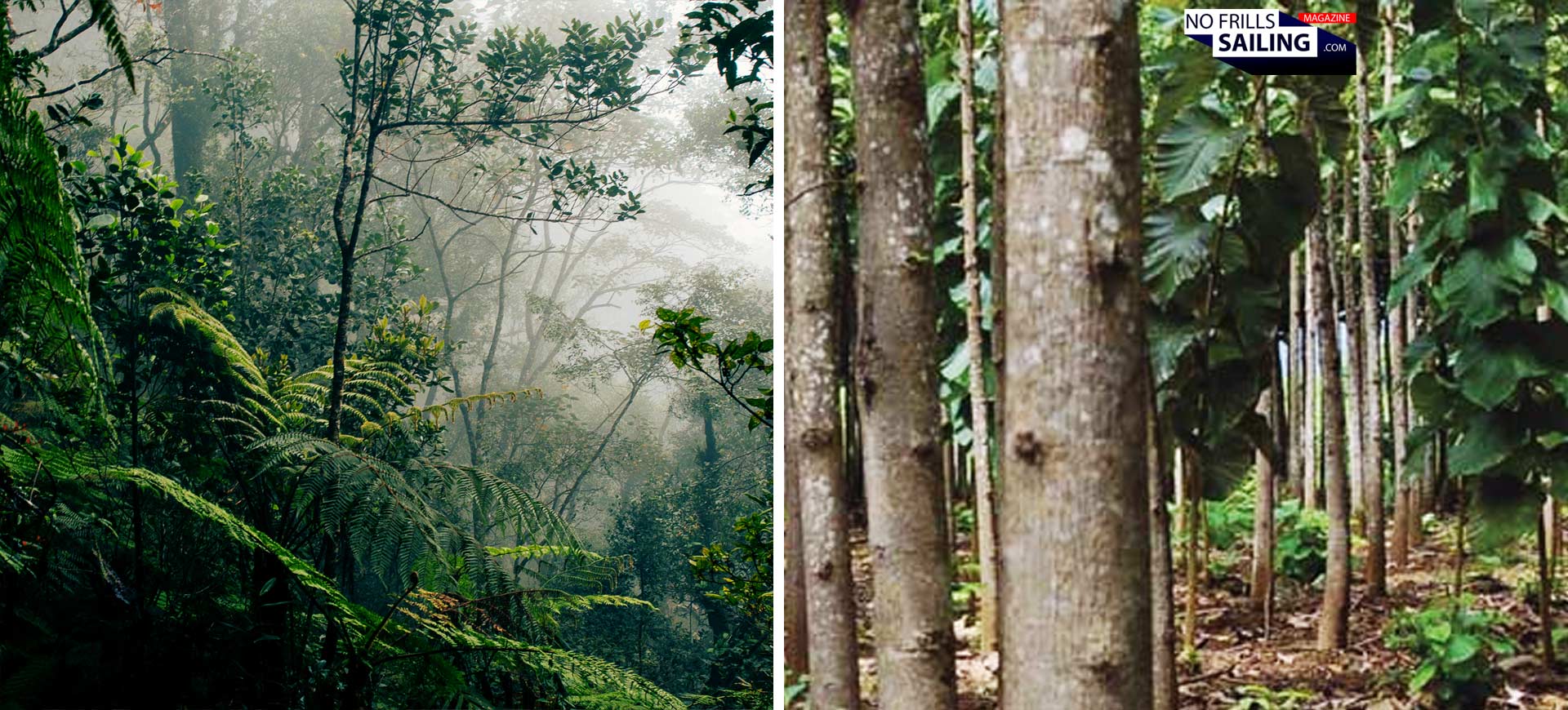
As Frank explains, the Teak from Myanmar is cultivated in by a professional, century-old forestry economy in Myanmar. It´s a forest, even in mixed cultivation, but not an untouched, precious virgin forest. “But it´s also not a plantation. The Teak forestry of Myanmar cultivates slow growing Teak in huge partitions. Each parcel of land is allowed to grow for about 30 years minimum. The “ripe” trees are cut and logs taken out by elephants.” It´s a pretty sustainable, low-interference lumber production method that has been cultivated dating back to the Golden Era of square rigged sail ships. “It could work even today”, he says. “The true reason for Teak from Myanmar being banned in shipbuilding is political. In 2008 a coup d´etat by the military wiped out the democratic structures of the state. An inhuman regime had taken over – so the western world blocked Myanmar´s biggest of their few sources of income – which was Teak. Lifted after first tentative signs of democratization, the embargo had been re-instated in 2021 by the US and the EU, Teak from this country is now completely banned. Basically since 2017 no Teak could be imported anymore to EU countries due to the European Timber Regulation EUTR that requests a legal certificate for any imported timber. Due to high corruption in Myanmar certificates are not regarded as trustworthy anymore. Which doesn´t mean it´s not appearing on the market: Illegal clearing and selling of Teak (via China for example) is indeed a problem. That´s by the way something I regularly hear within the business community.
Lürssen´s push to substitute Teak
It was this first embargo of 2008 which alarmed Lürssen. Their products need a deck, of course. With Teak not available anymore, how could it be substituted? This is when this mighty player advised their inhouse R&D department to launch a major program. Their task: Find a worthy substitute deck material for Teak! As it is so often the case in life, luck and fortuity made things fall into place. By chance, one of young Frank Lüssen´s early theoretical works at the university tackled exactly the right topic: His diploma thesis looked at the possibilities of substituting Teak in yacht building. It basically dealt with the basic concept of applying certain technological processes to lower grade timber and thus turning it into a material that adheres to certain requirements. “Which raw materials could be used? And which process must be applied to produce an end-product that would behave like Teak? That was the question.” Frank was hired by Lürssen right away and the project was greenlit.
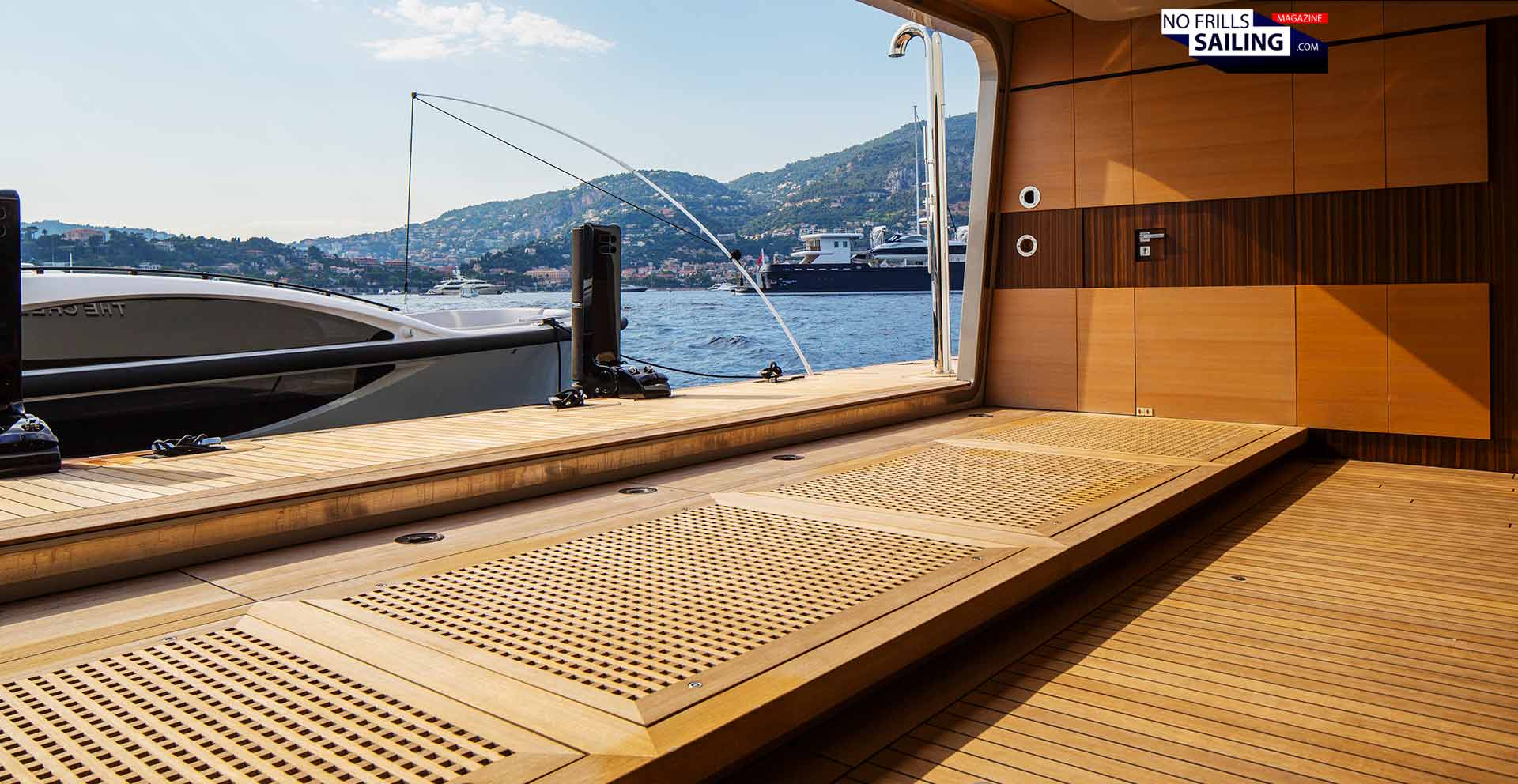
Even at that time, Lürssen decided to work together with a true scientific institution. The Department of Wood Biology and Wood Products of the Georg-August-University in Göttingen was the perfect place to go. It was a gigantic project. The scientists and engineers looked at more than 50 different kinds of timber. From local timber, like maple, to the most exotic ones. Finding answers to questions like: “Is it rot-resistant? Can it be bent to a certain point? Is it abundant?”, and many, many more. The team worked its way through a seemingly endless catalogue of requirements and with meticulous tests, calculations and research, this was arduously boiled down to three principal timbers: Koto, Hemlock and Limba.
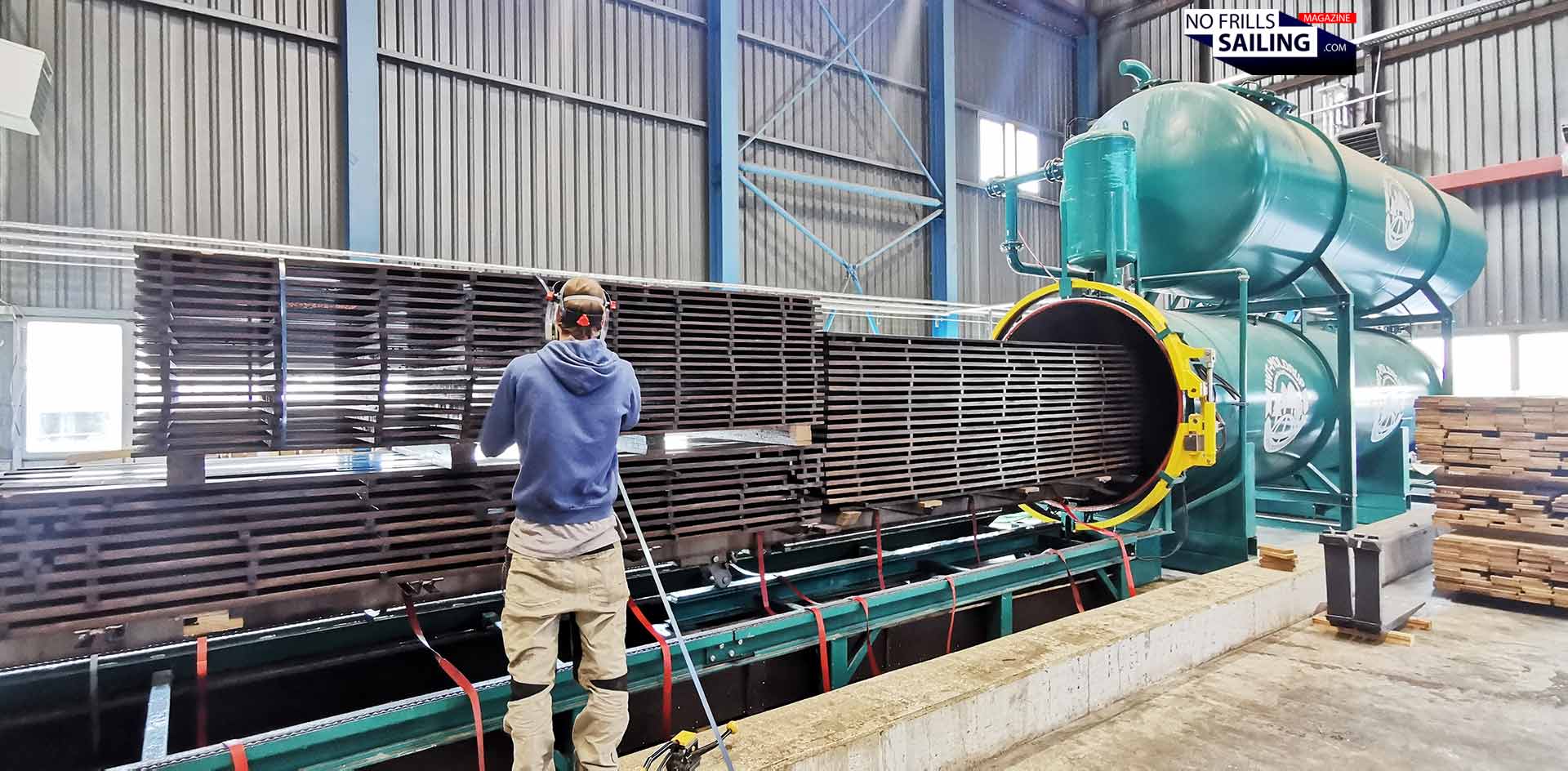
We are talking about a process, that took more than seven years. “With a pause”, Frank says: After the first Teak embargo was lifted, the pressure on the buyer-side had been eased a bit, so the push for a Teak alternative became less dedicated. “But it was about to change soon again!” The breakthrough in the research program was indeed not a completely new technology, but to combine in a clever way already existing processes to create Tesumo. I have shown and explained the process in detail in my first article, so in short: Thermo-treated wood (the decision was to utilize Limba) is specially treated and “impregnated” to become “Teak-like”. After the patent had been issued, Lürssen founded a joint-venture with one of the biggest Teak decking companies in Europe to take Tesumo from the academic bubble and set up a first life-sized test. That was in 2018.
From the CEO´s balcony to a beach club …
Up to this point, testing the new, now “Tesumo”-dubbed, material, had been done in relatively small quantities. Weathering chambers and outside tests, exposing the material to UV-rays, rain and “real” weather had established very promising outcomes. For example, Tesumo was subjected to excess heat, extreme cold, lots of moisture and UV over 8 to 10 weeks in a closed weathering chamber, simulating 24 cycles of such aggressive weathering. Bernhard calls it “rapid testing”. Koto and Limba achieved good outcomes, Hemlock was finally kicked out. Now it was time for a long-term test. Again, a funny co-incidence came into play: As the was about to complete a refurbishment of his office, the balcony needed a new nice decking. “That was our chance!”, says Frank.
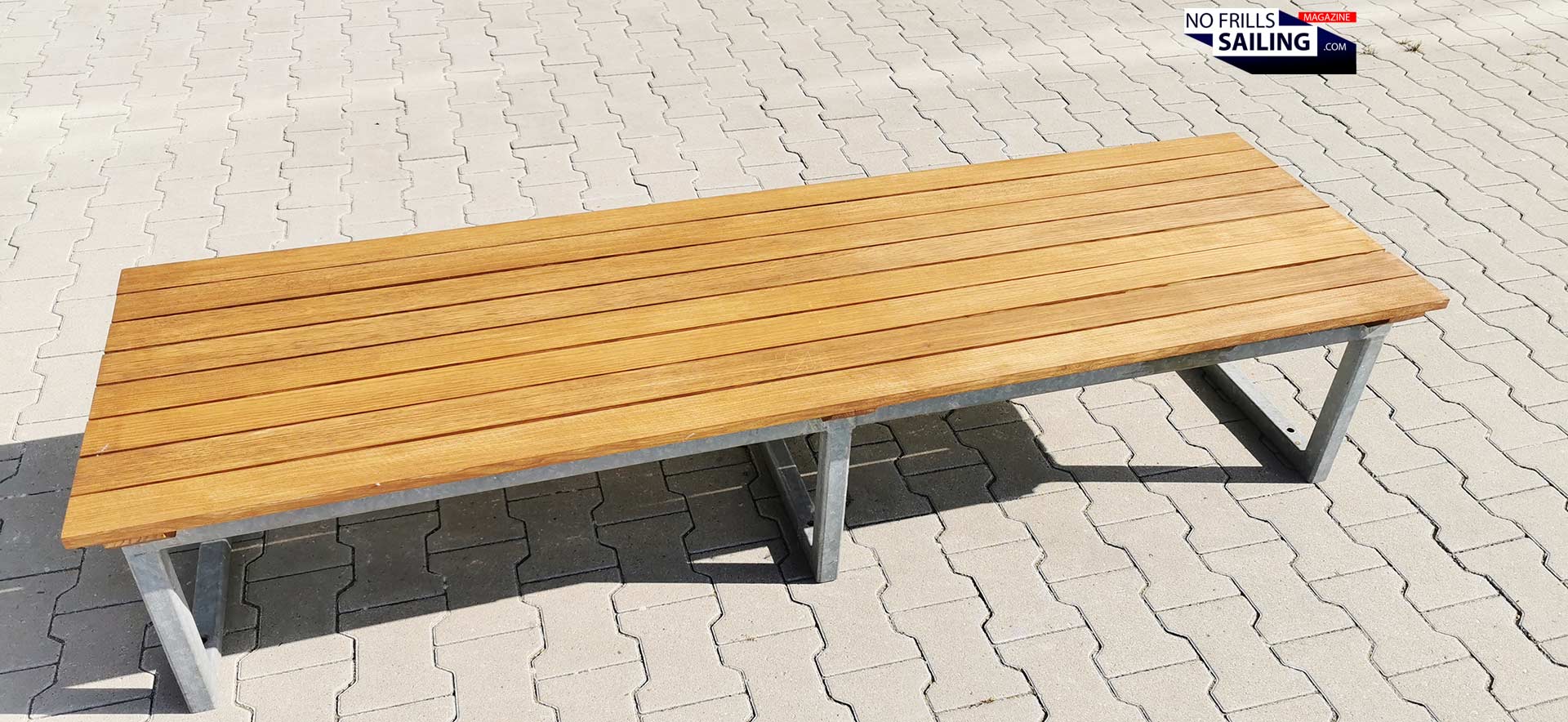
Koto and Limba, treated in the patented way, was installed 50/50 on the balcony. It was the perfect location for a long-term test, Bernhard recalled: Subjected to open weather, lots of Northern Europe rain, lots of unhindered sunshine and frequently used by people walking on the balcony, it was not unlike the deck of a ship on the ocean. The project group had the balcony (and some other open-area test arrangements) under monitoring since. “The Koto-based material showed micro-fissures and some other signs of deterioration whereas Limba seemed to work just as fine … so out decision was made: Tesumo will be made out of Limba!” A number of test-projects followed, with the Tesumo-covered area ever increasing. A beach club aboard a Lürssen-built yacht was fitted with Tesumo, marking the first marine use offshore for the new material. The German Navy´s last square rigged sail ship, the GORCH FOCK, received Tesumo, along with Iroko, Itauba and Afzelia-timber as even the navy was conducting tests for Teak substitutes.
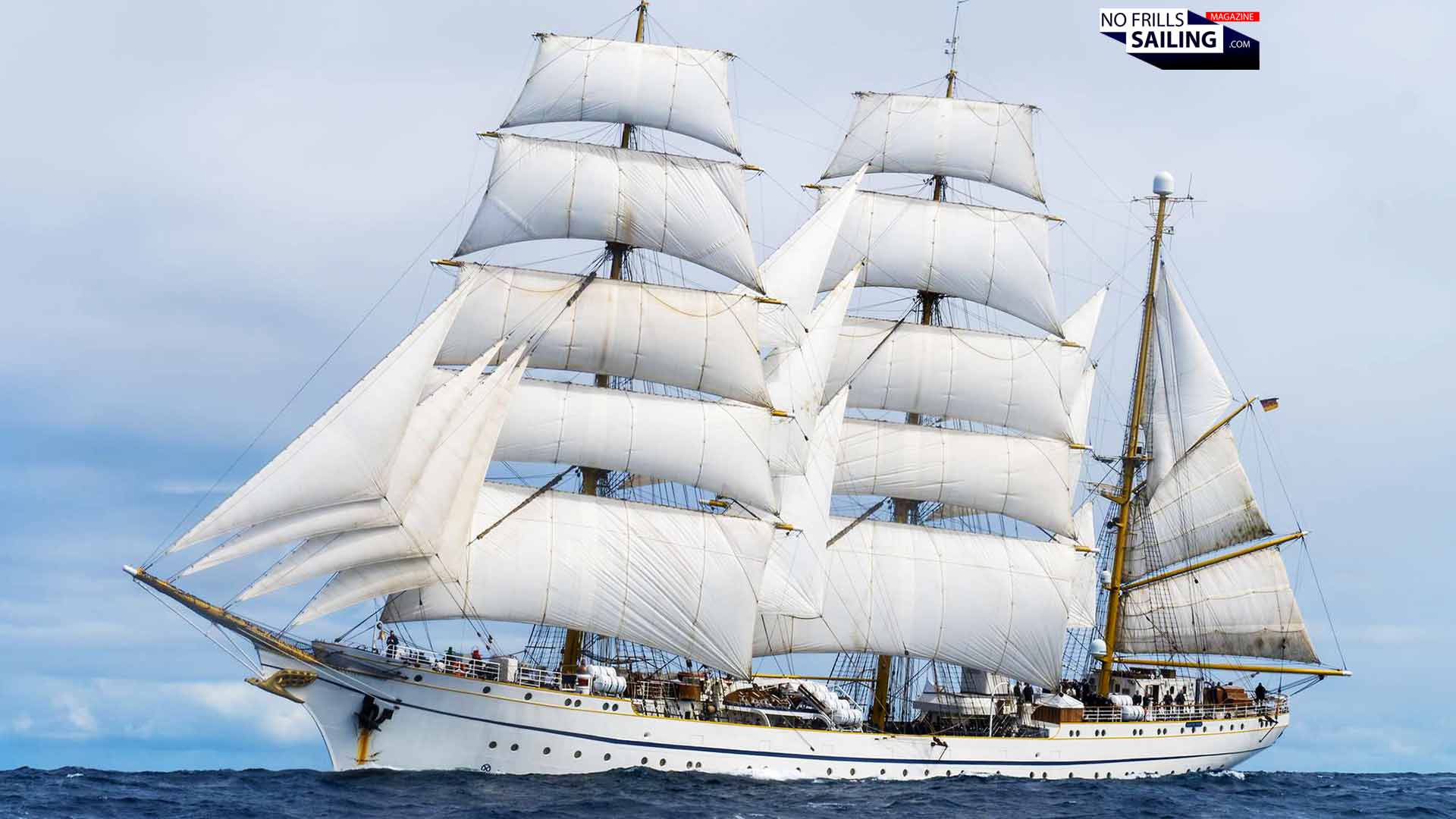
Whilst the testing went on, the group around Frank and Bernhard set up the plans to upsize Tesumo production to meet the huge demands of the shipbuilding industry. The plant in Bremen began to take shape. “Our biggest task was to combine the different steps of the production to have preferably all of them incorporated in one place”, Frank says. Which wasn´t completely possible. Due to strict legal constraints, the first step of thermal processing had to be outsourced to a German company not located in Bremen. “It would be a huge success to be able to include this last open production step into our new Tesumo plant here in Bremen”, Arne says. They are working on it. Anyway: With Tesumo now tested and the production process patented, it was time to aim higher.
First Tesumo-projects on the high seas
Albeit under development and testing, first “real” project for the new Teak-substitute had not been launched until 2024. The project managers were able to persuade one mega yacht-customer to have the helicopter deck of his yacht fitted with Tesumo. Frank said, that this 300 square meters area was a game changer for the material: “It´s a high-wear area. As you can imagine, a helicopter puts a lot of mechanical stress onto the decking. Also, the helipad is subject to unrestricted direct solar radiation, rain, saltwater spray and constant human traffic. Perfect for a stress test!”
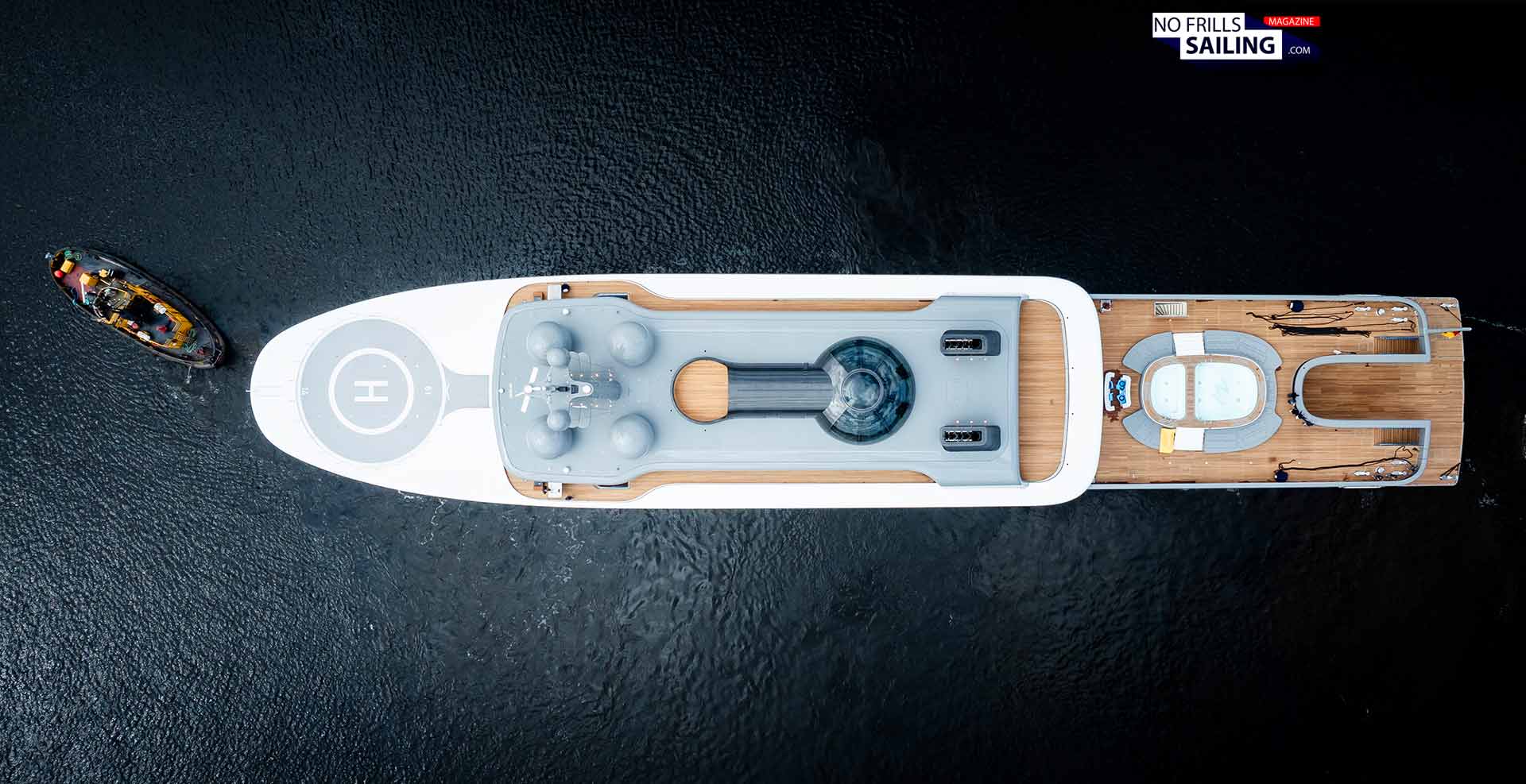
The R&D-team of Bernhard and Frank are closely monitoring every Tesumo-fitted project launched ever since. The small ones as well as the big ones. Lürssen yachts will have frequent service stopovers for maintenance and check-ups, a perfect chance to evaluate how the material behaves and holds up against the elements. “As we can see, it works. Most of the time people will never realize that they are not walking on Teak!”, Frank says. Bernhard agrees: “It makes me very happy to see how it all comes together and grows, after all.” Right now, the first Lürssen mega yacht is under construction. A milestone, because all of the deck material utilized on this ship will exclusively be Tesumo! “That´s a staggering number: More than 1.000 square meters of deck area. A quantum leap for Tesumo!”
Technology leading through early adopters
Bernhard says, from the industrial standpoint, Tesumo as a new material has now mastered its development phase. It took quite some time: From 2007 to today, it´s almost 15 years. But he insists: “At Lürssen only the top notch is acceptable. Our products are the of the highest quality, most modern and most technologically advanced superyachts you can have on the planet. Any part fitted to our yachts must meet the highest standards you can imagine. This means, if Lürssen accepts it, it´s highest in class!” What it needs though are customers asking for Tesumo. Teak – in a very limited form – is still available. Also, other, mostly synthetic and thus cheaper alternatives are there. The choice is up to the customers. But here, it turns out, is a pretty cool surprise.
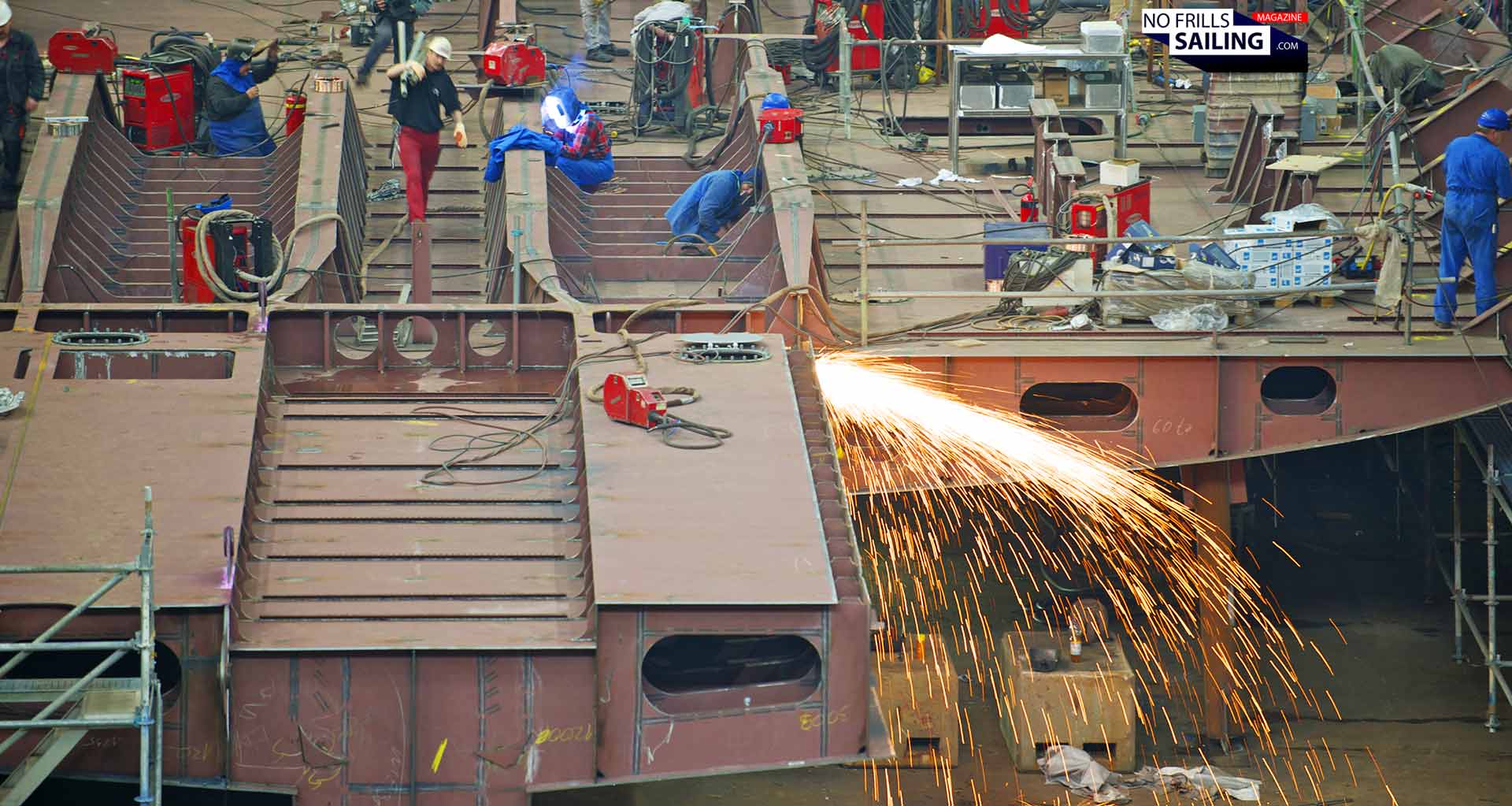
I want to be honest here: I am not very much into these oversized ultra-luxury mega-yachts. For me, 50 feet, 60 or 70 maybe is the end of what a yacht can meaningfully be. But anyway, these mega yachts are indeed fascinating objects, even though I feel a kind of a slight underlying distaste. Like, a small elite of very exclusive ultra-rich people building bigger and bigger yachts for their pleasure. Sheer decadence. Right? Well, not so much if you take a closer look. As with everything in life, there is no A or B. I don´t want to tune in to the “Eat the rich!”-stupidity here. Customers are feeding thousands of worker´s families. Mega yachts are pioneers of new technology. Those people are often very interested in future-proof technology. They specifically ask for sustainable materials, waste reduction and efficiency.
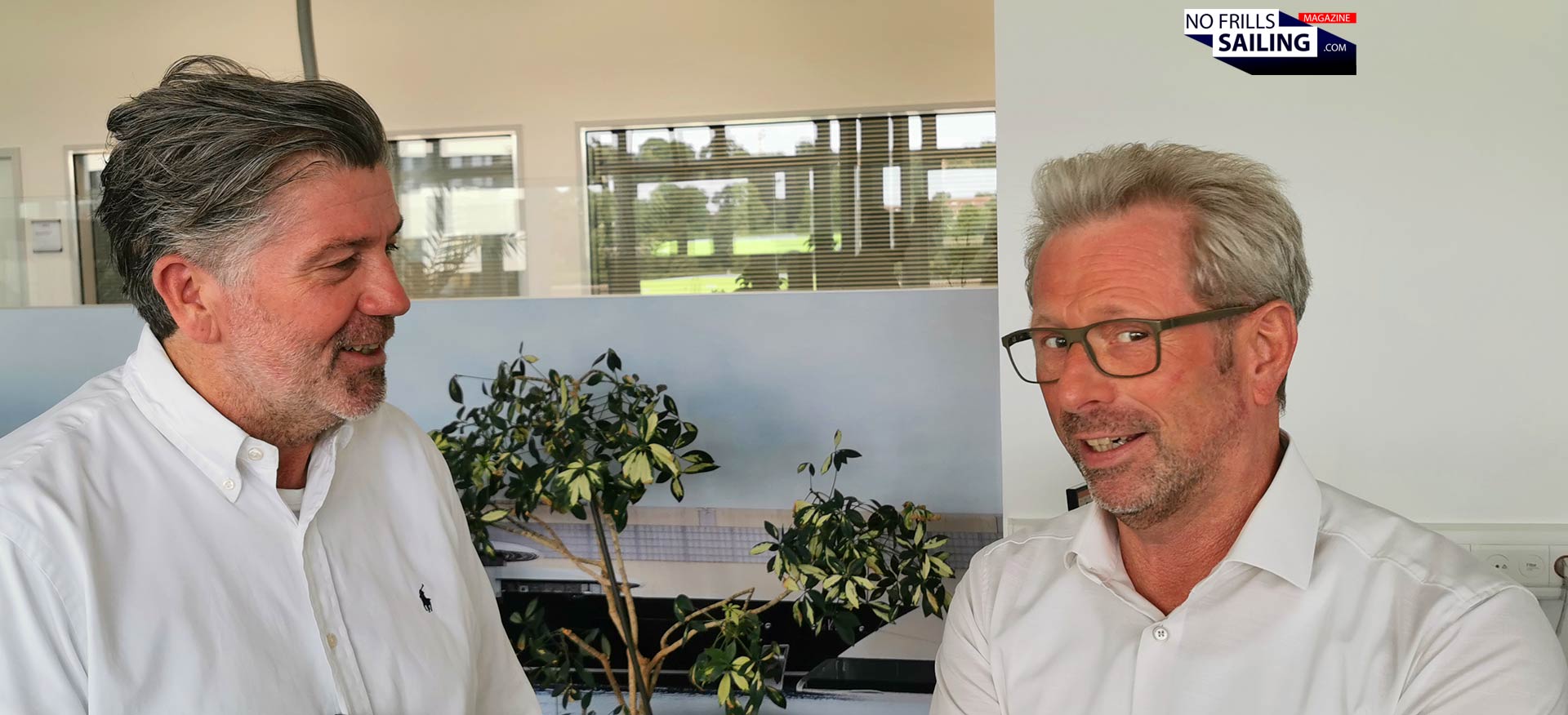
The two won´t disclose the budget Lürssen had invested to bring Tesumo to market. It´s supposedly millions of Euros. Same with their fuel cell-powered mega-yacht. And many more projects: This is a huge invest. And of course, someone has to pay for it. If it wasn´t for those ultra-rich early adopters, I am sure, groundbreaking technology or new materials would simply be far too expensive to realize. Think of the first Tesla cars – their price was insane. A car for the rich. Cell phones. Computers. Everything. And it´s no different with Tesumo. Bernhard is convinced that the more customers decide to go for this Teak alternative, the higher production output becomes and – ultimately – the lower the price would get. And they are on a good path here, as Arne insists: The first small sailboat, a 31-footer, had recently been launched by Knierim Yachtbau. Its deck? Tesumo!
Is Tesumo the future deck material for yachts?
Well, asking Arne, Bernhard and Frank, they surely wouldn´t have anything against it. But these guys are realistic too. Even if demand for Teak-alternatives in shipbuilding is growing and “green awareness” is manifesting more and more, there are still some challenges to overcome. Frank says that in terms of Tesumo, number one priority is securing the supply of raw Limba-wood in sufficient quantities. “And we also need a certain quality. Limba, up to now, was mainly used for low-cost furniture. This timber is a bit “untrendy”, so to speak. This means, training our suppliers, to provide raw timber with least growth defects and wood imperfections is paramount.” The team works hard on this – scrap rates are still too high. But gradually improving.
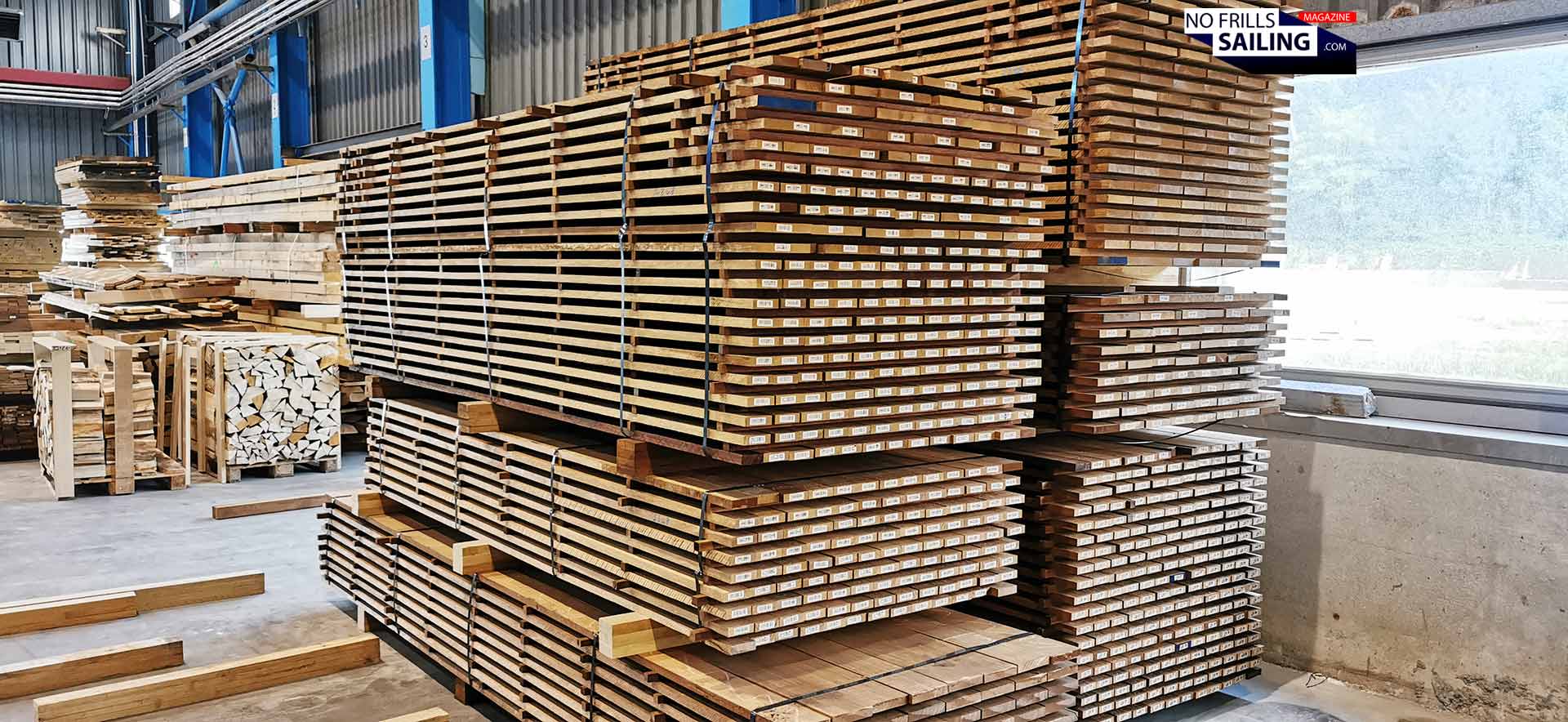
Speaking of scrap rates: The process of turning Limba into Tesumo (as you can see in detail in my first article) puts out three qualities of end product. Only the absolute spotless A-tier Tesumo is accepted by Lürssen. But tier B and even tier C are still very, very beautiful planks! I would even say much more interesting in terms of “character” than the rather uniform tier A-planks used for the mega yachts. “We are trying to change perception here in clients”, Bernhard says: “Tier B-quality can still be utilized for boat decks. Maybe not on a 160 meters super-yacht, but for cruising yachts, series production companies and even custom one-offs. Why not? Technically, these are the same, but maybe with some knotholes or imperfections.” Tier C-quality is perfect for architects and house construction, Frank adds. I wouldn´t care if my house´s wooden façade would have some knotholes of growth “defects” in it. Not at all!
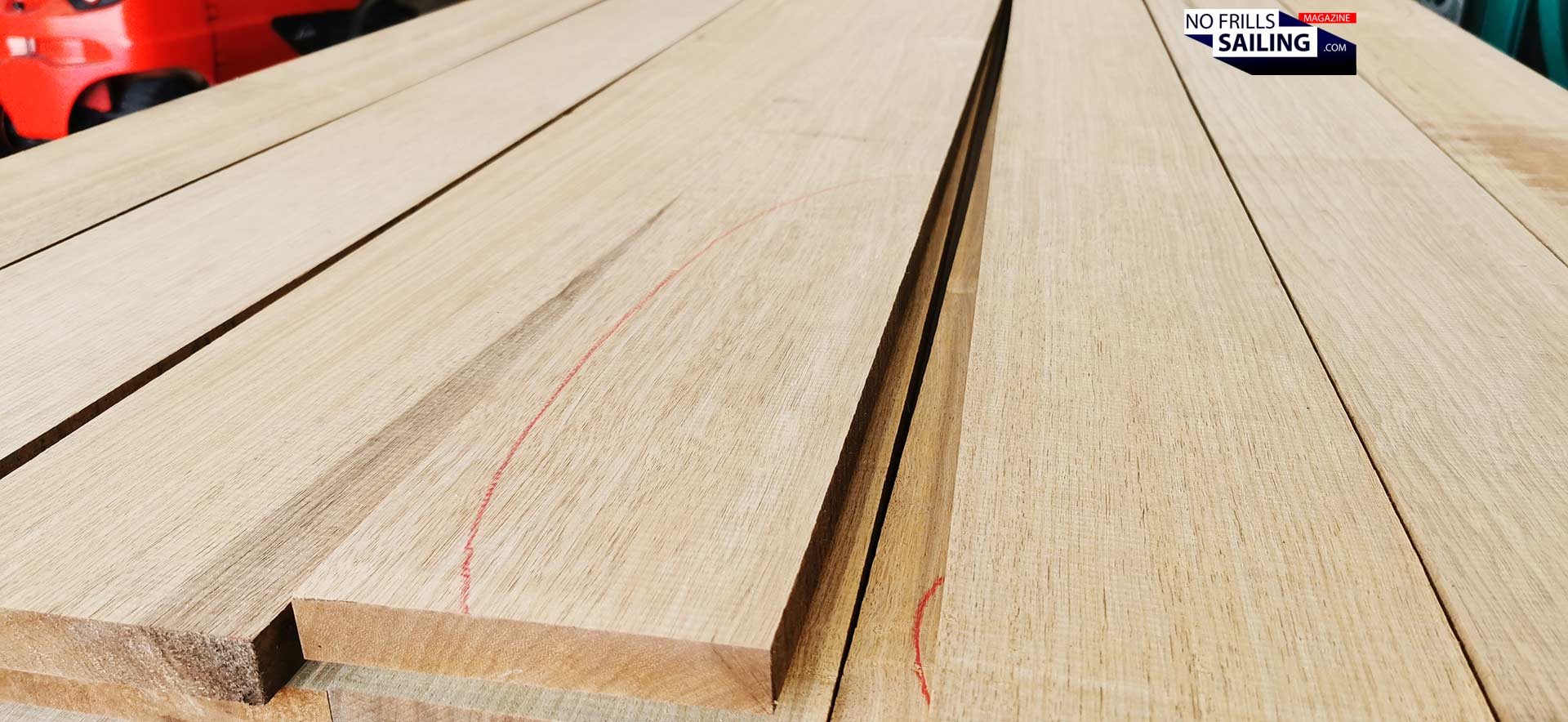
„You wouldn´t breed a cow, just to put the filet to the BBQ, right?”. Architects, home improvement stores or even marinas for their pontoons and jetties – the range of possible utilization for tier B and C-quality of Tesumo is almost limitless. But as with everything, Tesumo faces a lot of non-market headwind. The bureaucracy especially in Germany and the EU is only one stumbling block. Both recite the new EU-law which obliges any enterprise to fully certify its supply chain from the very start to the end, is a major hurdle. “Almost impossible!”, Arne says. “We as a comparatively small buyer simply cannot make the timber producers in Africa and all over the world comply with FSC-standards!” As much as this is a good idea, other non-EU competitors simply don´t care. This is why they can offer lower prices. Even Lürssen with their mega yachts have to fight competition.
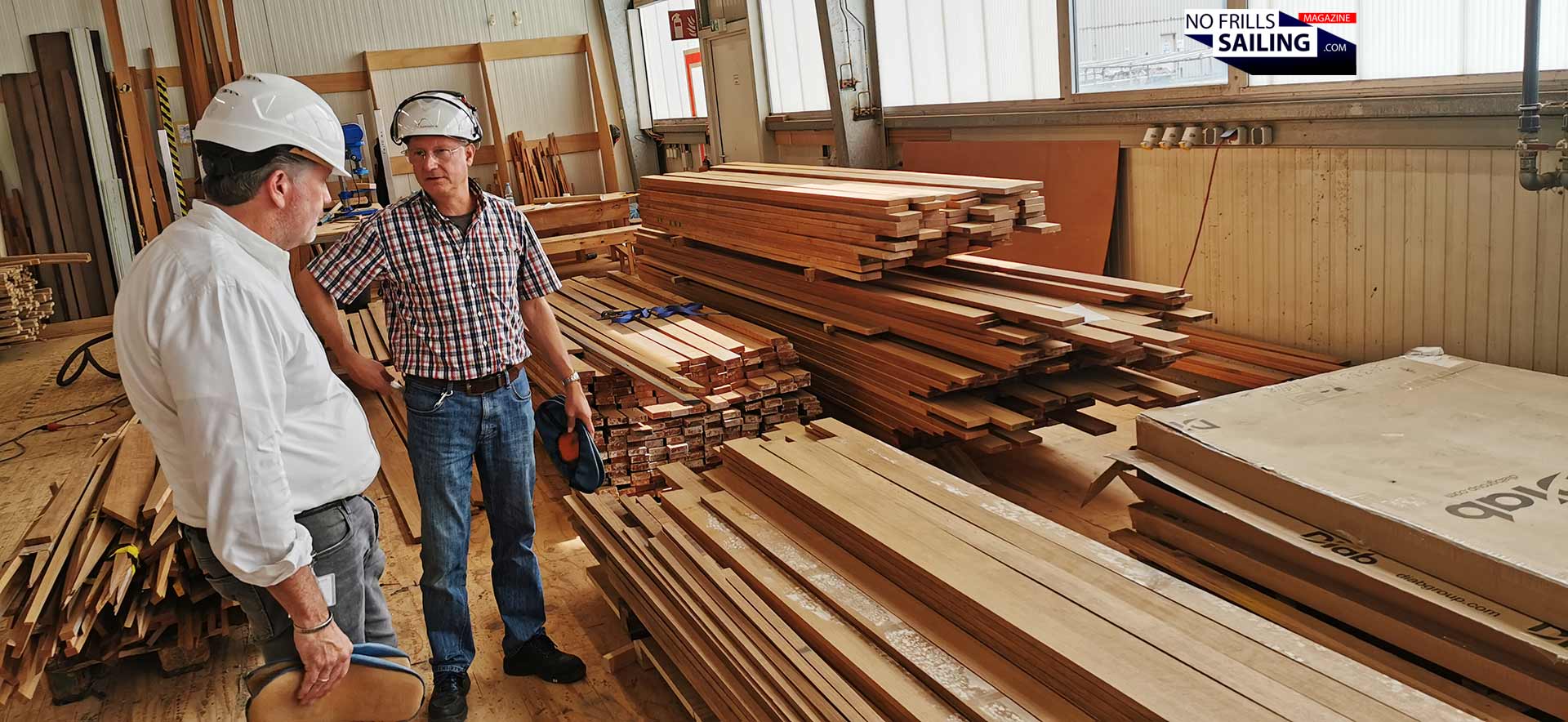
But these are obstacles which can and will be overcome. All three are sure of that. “Time will tell. We concentrate on current projects. These are showing that Tesumo is indeed an alternative. The more ships we launch, the more people will recognize it.” At the same time, the R&D guys around Frank and Bernhard are working hard to further improve their product and excite customers to choose Tesumo over Teak or synthetic supplants. In this, they invite me to see the latest super yacht in the assembly hall. I am about to go where only a few, very few, outsiders are allowed to. The holy halls. With a mega yacht currently being built. But as excited as I am to take you on this tour – this is something for the next article. So stay tuned, subscribe to the monthly newsletter and don´t miss any new article.
For now: Arne, Bernhard, Frank – thanks so much for this amazing story! I´m so glad having had the chance to talk with the fathers of Tesumo …
Related articles which might be of interest:
How Tesumo is made: The process of turning Limba into natural Teak-substitute
My first Beneteau with Iroko-deck
Yacht rubrails from Teak or Sapele?
